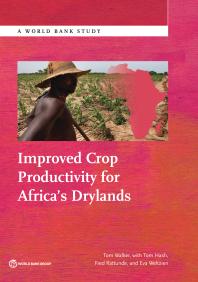Product desciption
Improved Crop Productivity For Africas Drylands 1st Edition Tom Walker Tom Hash Fred Rattunde Eva Weltzien by Tom Walker; Tom Hash; Fred Rattunde; Eva Weltzien 9781464808975, 146480897X instant download after payment.
More than 200 million people living in dryland regions of Sub-Saharan Africa make their living from agriculture. Most are exposed to weather shocks, especially drought, that can decimate their incomes, destroy their assets, and plunge them into a poverty trap from which it is diffi cult to emerge. Their lack of resilience in the face of these shocks can be attributed in large part to the poor performance of agriculture on which their livelihood depends. Opportunities exist to improve the fortunes of farming households in the drylands. Improved farming technologies that can increase and stabilize the production of millet, sorghum, maize, and other leading staples are available. Irrigation is technically and economically feasible in some areas and offers additional opportunities to increase and stabilize crop production, especially small-scale irrigation, which tends to be more affordable and easier to manage. Yet many of these opportunities have not been exploited on a large scale, for reasons that include lack of farmer knowledge, nonavailability of inputs, unfavorable price incentives, high levels of production risk, and high cost. Future production growth in drylands agriculture is expected to come mainly from raising yields and increasing the number of crop rotations on land that is already being cultivated (intensifi cation), rather than from bringing new land into cultivation (extensifi cation). Controlling for rainfall, average yields in rainfed cropping systems in Sub-Saharan Africa are still much lower than yields in rainfed cropping systems in other regions, suggesting that there is considerable scope to intensify production in these systems. Furthermore, unlike in other regions, production of low-value cereals under irrigation is generally not economic in Sub-Saharan Africa unless the cereals can be grown in rotation with one or more high-value cash crops. The long-run strategy for drylands agriculture, therefore, must be to promote production of staples in rainfed systems and production of high-value cereals (for example, rice), horticultural cops, and industrial crops in irrigated systems. Based on a detailed review of currently available technologies, Improved Crop Productivity for Africa’s Drylands argues that improving the productivity and stability of agriculture in the drylands has the potential to make a signifi cant contribution to reducing vulnerability and increasing resilience. At the same time, it is important to keep in mind that in an environment characterized by limited agro-climatic potential and subject to repeated shocks, farming on small land holdings may not generate suffi cient income to bring people out of poverty.


